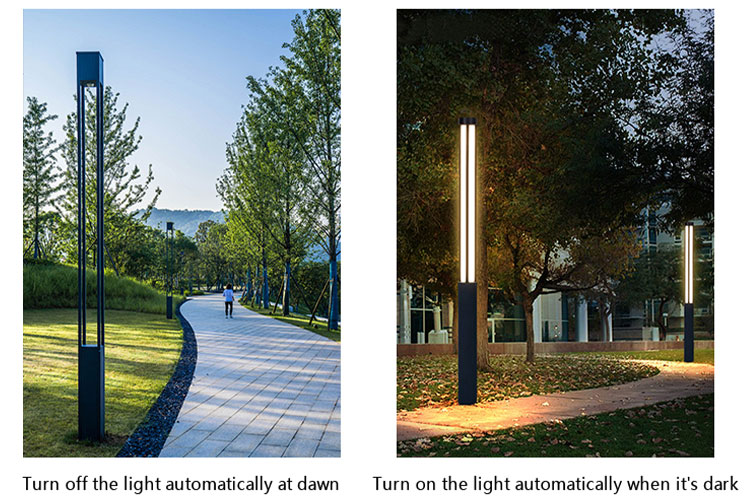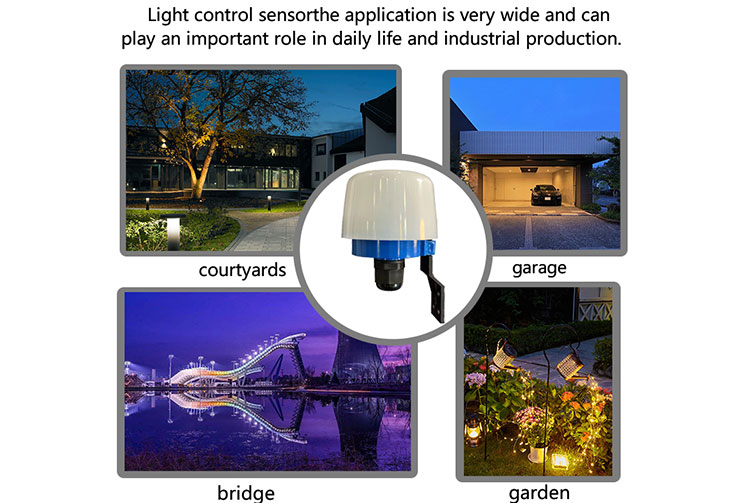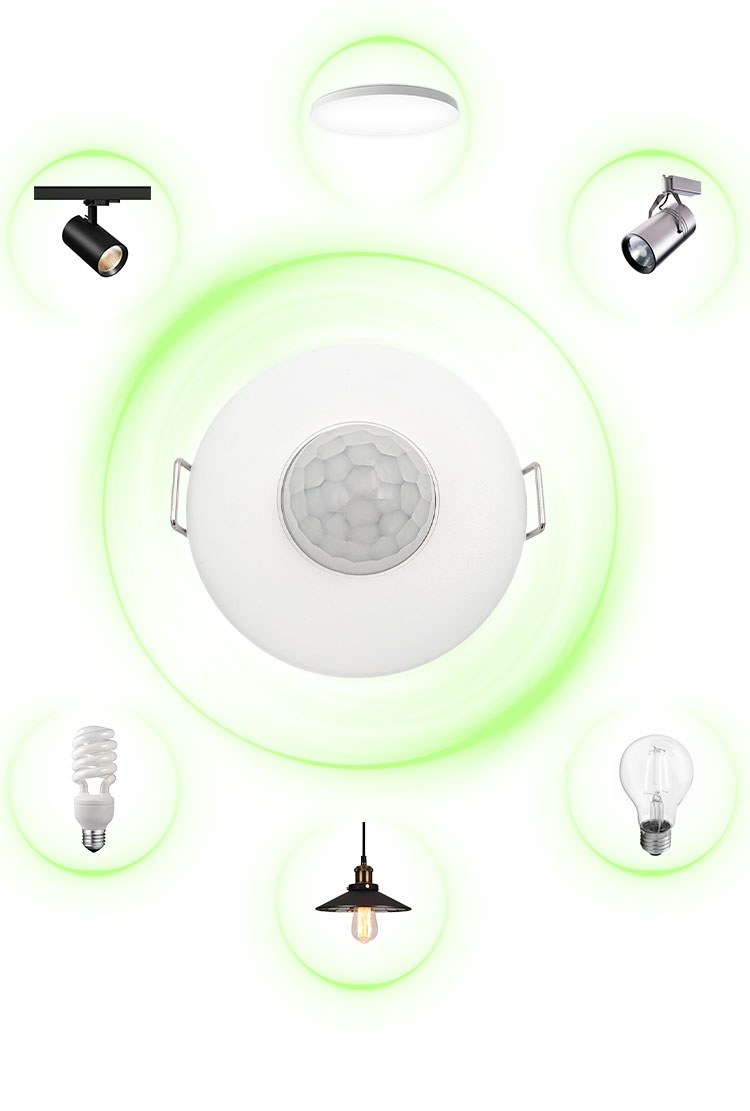

The Working Principle of Light-Controlled Switches
A light-controlled switch, often referred to as a photoelectric or photocell switch, is a device that activates or deactivates an electrical circuit based on the amount of light it detects in its surroundings. These switches are widely used in outdoor lighting systems, streetlights, and security systems, as they provide automated control by responding to natural light levels. By understanding the principle behind light-controlled switches, it’s easier to appreciate their contribution to energy conservation and convenience.
1. Overview of Light-Controlled Switches
A light-controlled switch functions by detecting ambient light and using it as a trigger to either turn on or off a connected electrical load. Typically, the light sensor within these switches is made of materials that respond to changes in light intensity. For example, a light-controlled switch might activate outdoor lighting at dusk when the natural light fades and turn off the lights at dawn as the sun rises, eliminating the need for manual intervention.
2. Key Components of a Light-Controlled Switch
The main components of a light-controlled switch include:
- Light Sensor (Photocell or Phototransistor): The core of the light-controlled switch is its light sensor, which is usually a photocell, light-dependent resistor (LDR), or phototransistor. These components respond to light intensity and form the basis of the switch's operation.
- Comparator Circuit: This circuit compares the voltage generated by the light sensor to a set threshold. When the detected light level crosses this threshold, the switch either activates or deactivates the electrical load.
- Relay or Transistor Switch: The relay or transistor is the component that opens or closes the circuit, allowing the connected load, such as a light bulb or appliance, to turn on or off.
- Control Circuit: The control circuit, often consisting of resistors and capacitors, regulates the behavior of the switch. It helps stabilize the switching process by ensuring the relay or transistor only triggers at specific light levels, preventing false activations.
![]()
3. How a Light-Controlled Switch Works
The operation of a light-controlled switch can be broken down into the following steps:
a) Detection of Ambient Light
The light sensor is the primary component that detects ambient light. In most cases, an LDR or photocell is used. An LDR has a resistance that varies inversely with the amount of light it receives; as the light intensity increases, its resistance decreases, and vice versa. When ambient light falls on the LDR, it alters the electrical resistance within the circuit, which in turn changes the current passing through the light-controlled switch circuit.
b) Voltage Variation and Signal Processing
As the ambient light intensity varies, the resistance in the light sensor changes, leading to a variation in the voltage. This voltage is then compared against a preset reference voltage within a comparator circuit. The comparator determines whether the detected light level is above or below a specified threshold.
c) Triggering the Switch
When the comparator determines that the light level has crossed the threshold, it sends a signal to the relay or transistor switch. If the light level falls below the threshold (indicating it’s getting dark), the comparator triggers the relay to close the circuit, turning on the connected device, such as a light. Conversely, when the light intensity exceeds the threshold, the comparator causes the relay to open the circuit, turning off the device.
d) Adjustment and Control
Many light-controlled switches allow for sensitivity adjustment, enabling users to fine-tune the device’s response to light levels. This adjustment can be achieved by modifying the resistance values in the control circuit, allowing the switch to activate or deactivate at desired light intensities.
4. Applications of Light-Controlled Switches
Light-controlled switches are used in various applications, largely for their convenience and energy-saving properties:
- Street and Outdoor Lighting: These switches are commonly used to automate streetlights, turning them on at dusk and off at dawn, reducing the need for manual operation.
- Security Lighting: In homes and businesses, light-controlled switches are often used to automatically activate security lighting, providing illumination during low-light conditions to enhance safety.
- Garden and Landscape Lighting: Many landscaping projects integrate light-controlled switches for aesthetic purposes, automatically lighting pathways and gardens as it gets dark.
- Energy Conservation in Commercial Spaces: Many commercial spaces employ light-controlled switches to save on energy costs by turning off lights in unused or sunlit areas.
5. Advantages of Light-Controlled Switches
- Energy Efficiency: One of the main benefits is reduced energy consumption. By automatically turning lights on only when needed, these switches help conserve power and lower electricity bills.
- Extended Bulb Life: Since lights are not left on continuously, their lifespan is extended. This also leads to reduced maintenance costs in applications like street lighting.
- Increased Safety and Security: Automated lighting contributes to safer environments, particularly in outdoor settings where consistent lighting deters unauthorized access.
- Convenience and Automation: Light-controlled switches simplify lighting management, particularly in large outdoor or inaccessible areas, by eliminating the need for manual controls.
6. Limitations and Challenges
While light-controlled switches provide numerous advantages, they also have some limitations:
- Sensitivity to Environmental Changes: External factors like temporary shadows or intense artificial lighting may affect sensor performance, leading to occasional false activations.
- Dependence on Proper Installation: These switches require precise placement to avoid interference from artificial light sources that may affect sensor accuracy.
- Potential for Minor Delays: Some photocell-based switches may experience minor delays when switching due to gradual changes in light intensity, which can lead to fluctuations in operation.
Conclusion
In summary, light-controlled switches are essential components in modern lighting systems, providing automated control based on ambient light conditions. Their operation relies on the interaction between a light sensor, comparator, and relay to achieve smooth switching. The technology is ideal for energy conservation, convenience, and safety, making light-controlled switches highly effective in outdoor, security, and decorative lighting applications. As technology advances, light-controlled switches are becoming more efficient, offering even greater accuracy and flexibility in controlling our environments.









